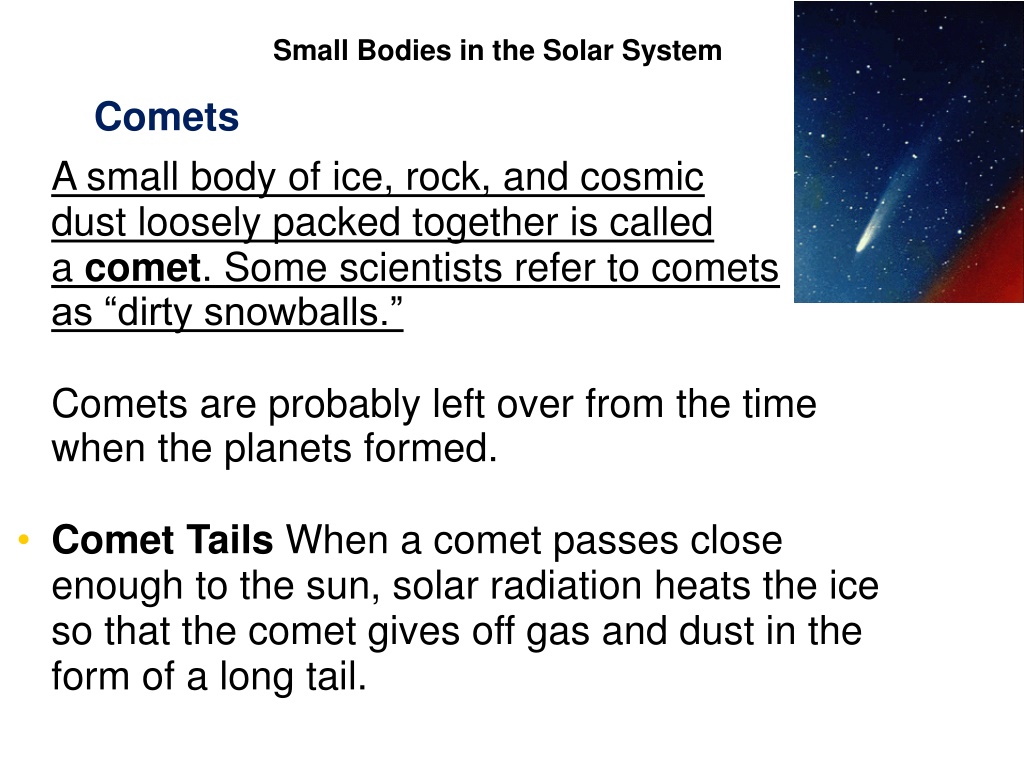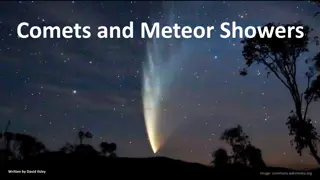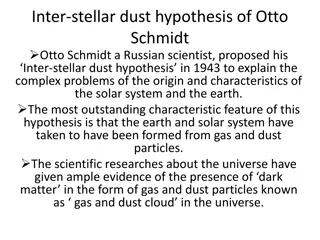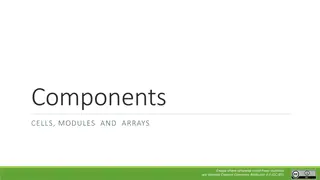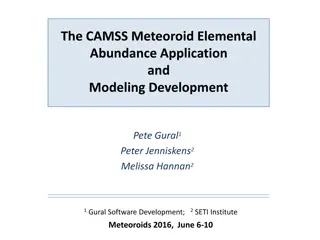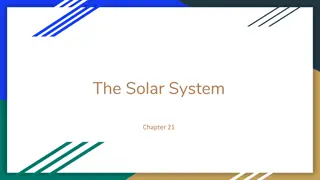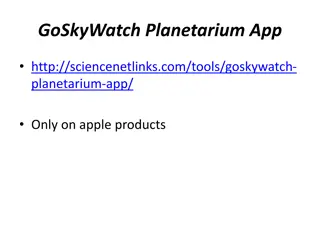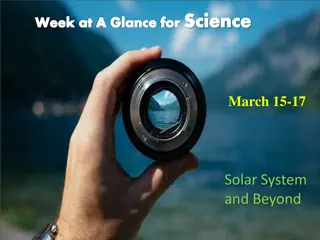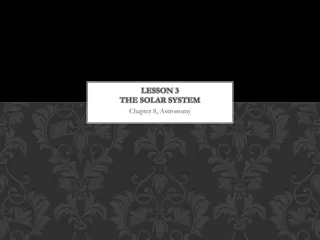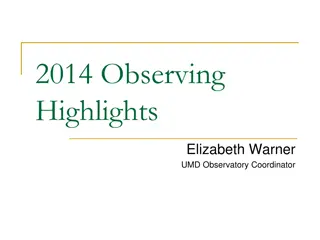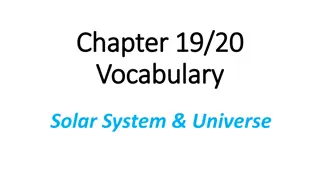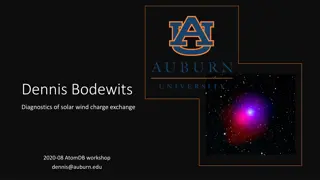Small Bodies in the Solar System: Comets, Asteroids, and Meteoroids
Comets are icy rock bodies with tails that form when passing close to the sun. Asteroids are rocky bodies in the asteroid belt, with different compositions. Meteoroids are small rocky bodies revolving around the sun, creating meteor showers when entering Earth's atmosphere. The content discusses their characteristics, origins, and types.
Download Presentation

Please find below an Image/Link to download the presentation.
The content on the website is provided AS IS for your information and personal use only. It may not be sold, licensed, or shared on other websites without obtaining consent from the author. Download presentation by click this link. If you encounter any issues during the download, it is possible that the publisher has removed the file from their server.
E N D
Presentation Transcript
Small Bodies in the Solar System Comets A small body of ice, rock, and cosmic dust loosely packed together is called a comet. Some scientists refer to comets as dirty snowballs. Comets are probably left over from the time when the planets formed. Comet Tails When a comet passes close enough to the sun, solar radiation heats the ice so that the comet gives off gas and dust in the form of a long tail.
Small Bodies in the Solar System Comets, continued Comet Orbits The orbits of all bodies that move around the sun are ellipses. Ellipses are circles that are somewhat stretched out of shape. A comet s ion tail always points away from the sun due to solar wind. Dust tails do not always point away from the sun. Comet Origins Scientists think that comets come from the Oort cloud that surrounds the solar system. Comets also exist in the Kuiper belt beyond Neptune.
Comets come in a wide range of sizes. The largest nucleus observed is about 25 miles, or 40 kilometers, in diameter. The dust and ion tails can be enormous. Small Bodies in the Solar System Comets, continued
Small Bodies in the Solar System Asteroids What Are Asteroids? Small, rocky bodies that orbit the sun are called asteroids. They range in size from a few meters to more than 950 km in diameter. Most asteroids exist in the asteroid belt, a region of the solar system between the orbits of Mars and Jupiter.
Small Bodies in the Solar System Asteroids, continued Types of Asteroids. The outermost asteroids are richer in organic material, while the innermost asteroids are more stony and metallic.
Small Bodies in the Solar System Meteoroids A meteoroid is a small, rocky body that revolves around the sun. They are similar to but much smaller than asteroids. Meteor Showers You can see a large number of meteors when the Earth passes through the dusty debris of comets. A meteor is a bright streak of light caused by a meteoroid falling through Earth s atmosphere. These shooting stars are dust- to pebble-sized particles burning up from friction.
Small Bodies in the Solar System Meteoroids, continued Types of Meteorites A meteoroid that falls through the atmosphere without burning up completely and strikes the ground is called a meteorite. Like asteroids, meteorites have different compositions. There are three major types of meteorites: stony, metallic, and stony-iron.
Small Bodies in the Solar System The Role of Impacts in the Solar System An impact occurs when two bodies collide in space. Often the result is an impact crater. Planets and moons that do not have an atmosphere receive many more impacts. Earth s atmosphere burns up many meteors that might otherwise result in impacts.
